Arkansas' Crystal Bridges, the Art Museum That Walmart Built
By Zac ThompsonIn 2011, Bentonville, Arkansas, somewhat improbably joined the ranks of cities with at least one top-flight art museum worth traveling great distances to see. That would be the Crystal Bridges Museum of American Art, an indisputable pilgrimage site for fans of the country's sculptors, photographers, and painters—especially the painters. Among the all-American icons housed here: famous portraits of the Founding Fathers, influential examples of the Hudson River School of landscape pictures (including the movement's apotheosis, Asher Brown Durand's Kindred Spirits), Norman Rockwell's patriotic Rosie the Riveter, and 20th-century experiments by the likes of Mark Rothko, Andy Warhol, Alma Thomas, and Roy Lichtenstein. Walking through the chronologically arranged galleries of the permanent collection is like cramming an Intro to American Art class into one day.
The foothills of the Ozark Mountains might seem an unlikely spot to find such a repository of national treasures. But only if you believe that American art and culture don’t belong to all of America. Of course, I could be biased. I grew up in these parts.
I’m from Springdale—two towns over from Bentonville. When I was a kid in the 1980s and ‘90s, there weren’t a lot of opportunities to appreciate visual art in northwest Arkansas. Unless you count this one horse statue that stood in front of a flower shop and was repainted each month with a new fanciful design (it’s still there, by the way). You could also look at student exhibits at the University of Arkansas in Fayetteville or frequent craft fairs where the homemade goods ranged from beautiful quilts and wood carvings to country kitsch involving macrame, pipe cleaners, googly eyes, and mason jars. (The popular War Eagle Craft Fair is held each year near the bridge pictured above.)
To get a good long look at works made by famous artists, though, I had to move away. I had seen photo reproductions in some cases, but the difference between looking at a poster and the real thing is akin, I imagine, to the difference between gazing at Jake Gyllenhaal in Us Weekly and being in the same room with him. One experience is merely pleasant, the other heart-stopping.
In any case, the underage northwest Arkansans of today don’t have to wait as long as I did to see famous masterpieces. And for that, they can thank an entity not often associated with advancing culture or, for that matter, philanthropy: Walmart.
Crystal Bridges is the pet project of Walmart heiress Alice Walton, whose father, Sam, started his cheap-retail empire in Bentonville, from whence it went on to swallow the world (Walton's original five-and-dime store, now the Walmart Visitors Center, is pictured above). In the buildup to the museum’s opening, some critics saw something similarly rapacious in the way the Walton Family Foundation built its art collection, gobbling up masterworks and then consigning them to the Bible Belt. Wouldn’t the art be better served, some wondered aloud, being displayed in a busy urban center where more people could see it?
But, as it turns out, the art has not been moldering away in obscurity. In its first five years, the museum was visited by a respectable 3 million people—which is about how many live in the entire state of Arkansas. According to the museum’s admission figures, guests have come from all 50 U.S. states and six continents. (Admission, by the way, has been free from the start.) Far from hiding away its treasures, Crystal Bridges makes a convincing case for expanding access to art in areas that have been traditionally starved of it. With a building designed by Israeli architect Moshe Safdie to blend into the landscape and, inside, a wide-ranging collection showcasing well-known icons spanning the entire range of American art history, the museum manages to celebrate its region and widen the region's cultural horizons at the same time.
The complex pays tribute to its natural surroundings chiefly via the grounds and architectural design. Set in a ravine amid 120 leafy acres dotted with ponds and lined with hiking trails, Safdie’s concrete-and-wood buildings feature elongated halls with rounded, copper-clad roofs meant to echo the rolling Ozarks (they look a little like giant millipedes when seen from above). Glass-enclosed walkways between the galleries let the outside in and allow for opportunities to contemplate nature, reflect on the art you’ve just seen, or both.
This rooted-to-the-landscape aesthetic owes something to the most famous American architect of the 20th century, Frank Lloyd Wright—whose work, as a matter of fact, is represented at the museum. Not content to settle for blueprints or a piece of furniture, Crystal Bridges acquired an entire Wright-designed house in New Jersey and relocated the whole kit and caboodle to the grounds of the museum. If this sounds like a violation of Wright’s own principle of tailoring a building to its specific location, well, it sort of is. But the move was also a rescue mission. Built in 1956 along the Millstone River, the Bachman-Wilson House, as it’s called, was in danger of being irreparably damaged by flooding. The owners figured it was better to relocate the house than watch it get destroyed. Today the structure occupies a wooded spot where you can check out Wright’s famous “Usonian” combo of modern lines in harmony with timeless nature.
After walking through the house’s interior, head back to the museum entrance, ignoring the shiver of dread you feel while passing under Louise Bourgeois' Maman—a 30-foot bronze spider with six identical siblings scattered across the globe.
The galleries of the permanent collection are arranged in chronological order. Since the museum’s size, though nothing to sneeze at, isn’t overwhelming—and since the United States is a fairly recent phenomenon compared to ancient cultures—you can take a nice survey of American art (and history) in a couple of hours. Some of the most interesting works displayed in the Colonial to 19th Century Gallery (pictured) and the Late 19th Century Gallery are the portraits of prominent figures and everyday people alike. In addition to imparting something of the character of the time, the galleries let you watch as the young country’s painters become the first to mull over what American art is, should, and will be, whether by showing off American heroes (Gilbert Stuart’s 1797 depiction of a resolute George Washington), capturing scientists and other thinkers at work and at home (or both, as in Thomas Eakins’s shadowy 1874 picture of an anatomy professor studying a book while petting his cat), or putting their own spin on European movements (Mary Cassatt’s Impressionistic The Reader of 1877).
You know how at certain museums you get tired of looking at Madonna-with-child and bowls-of-fruit paintings, no matter how impressively done, because there are just so many of them? The Crystal Bridges equivalent is landscape fatigue. American artists of the 19th century were intoxicated with the idea of capturing the continent’s rugged wilderness—and the museum has many, many canvases to prove it. If, like me, you believe that a little green goes a long way, you might want to focus on two or three illustrative examples and move on, lest you get bogged down.
Highlights include works by Hudson River School founder Thomas Cole and his prized pupil, Frederic Edwin Church, as well as Asher Brown Durand’s showstopping Kindred Spirits (pictured above). That 1849 painting depicts Cole and nature poet William Cullen Bryant standing on a rocky outcrop surrounded by an idealized Catskills landscape. In one go, Durand managed to create the high watermark of American romanticism and pay tribute to two of its most important proponents. (Incidentally, when Alice Walton bought Kindred Spirits in 2005 at auction from the New York Public Library, the $35 million she paid was a record for a painting by an American artist.)
The hands-down crowd favorite at Crystal Bridges is Norman Rockwell’s famous illustration of Rosie the Riveter, which appeared on the cover of the Saturday Evening Post in 1943 and was later used by the Treasury Department in bond drives during World War II. Caught on her lunch break, the brawny factory worker and enduring symbol of homefront heroism and female empowerment holds a ham sandwich in one hand, cradles a rivet gun on her lap, and tramples a copy of Hitler’s Mein Kampf underfoot. It's like a chant of "U.S.A! U.S.A.!" in oil-painting form.
Rockwell used a 19-year-old telephone operator as a model for Rosie’s head, and, for the body, Michelangelo’s Isaiah from the ceiling of the Sistine Chapel. Always surrounded by a crowd, the iconic image is Crystal Bridges‘ answer to the Louvre’s Mona Lisa—and from the look of them, the smart money would be on Rosie taking her in a fight.
If the museum has a weak spot, it’s probably the early decades of the 20th century—possibly because whatever was happening in American art at the time was overshadowed by the explosion of modernism centered in Paris. But the collection picks up again after World War II, with Mark Rothko’s color blocks, Jasper Johns’s rough-hewn American flags, Roy Lichtenstein’s comic-book panels, Alma Thomas’s swirling mosaics, and other noteworthy works. A standout is Andy Warhol’s silkscreen portrait of country singer-songwriter Dolly Parton, whose megawatt celebrity and highly artificial look made her a natural subject for Warhol’s shameless idolatry of mass fame in all its guises. I’d show you a picture, but getting permission for images of Warhol’s work is a whole to-do. Instead, the museum’s 1940s to Now Gallery is pictured above.
The last section brings you up to the near-present, giving you the chance to consider how contemporary artists fit in with or struggle against the country’s visual heritage—or break out in new directions altogether. Photo-realist silicone sculptures of old men created by Evan Penny and Duane Hanson, for instance, invite comparisons to the portraits seen in earlier rooms, while installations like Felix Gonzalez-Torres’s “Untitled” (L.A.) (pictured) remind us of those who until recently have been excluded from the story. A carpet of individually wrapped green candies that visitors are invited to sample, Gonzalez-Torres’s piece was created in 1991, the same year his longtime partner died of AIDS complications. The candy pile’s gradual depletion recalls the wasting-away wrought by the disease—just as the candy’s daily replenishment suggests renewal through art. That last part seems a fitting grace note for what Crystal Bridges has set out to do.





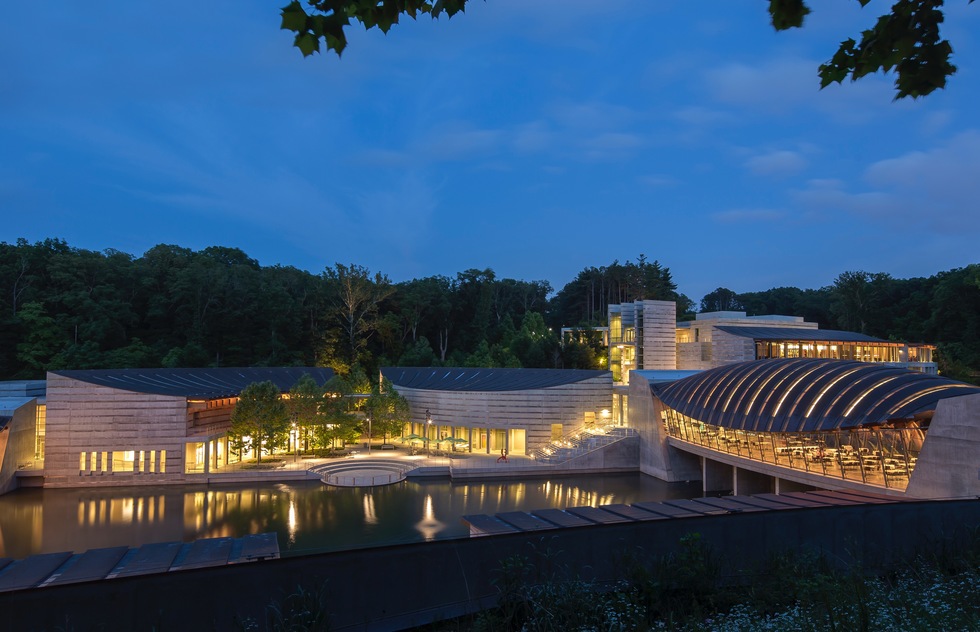

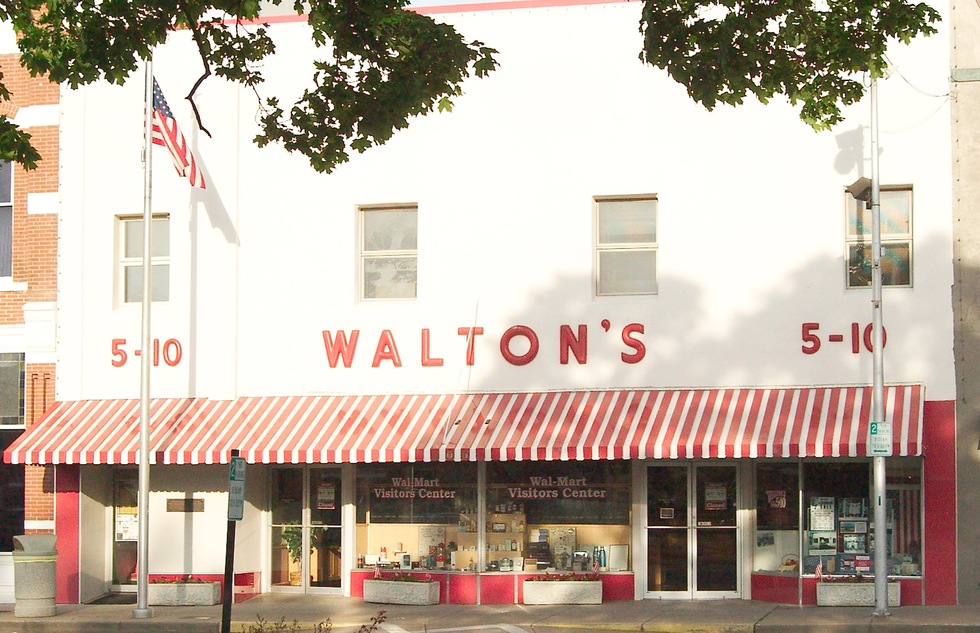
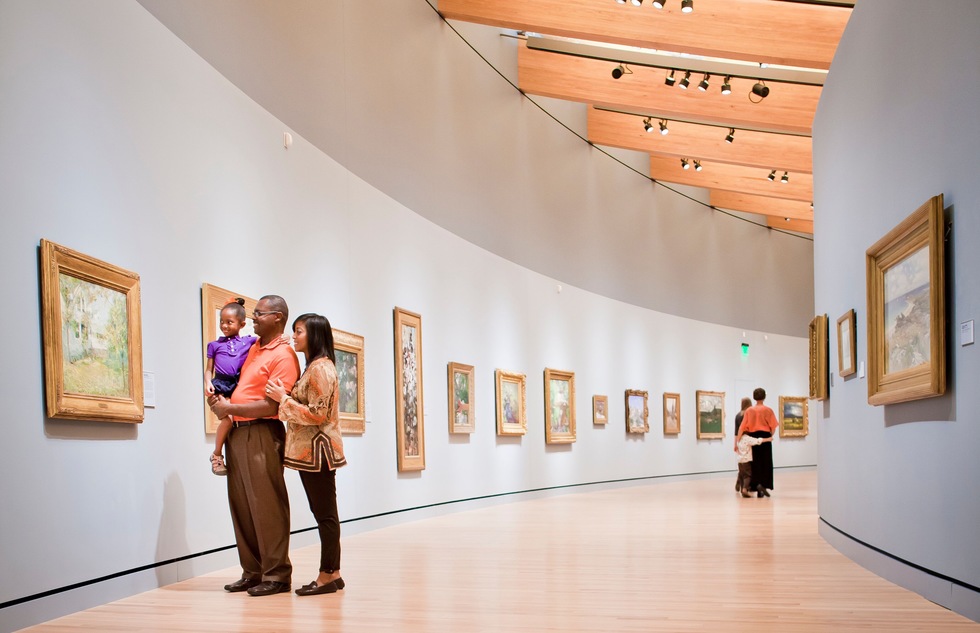
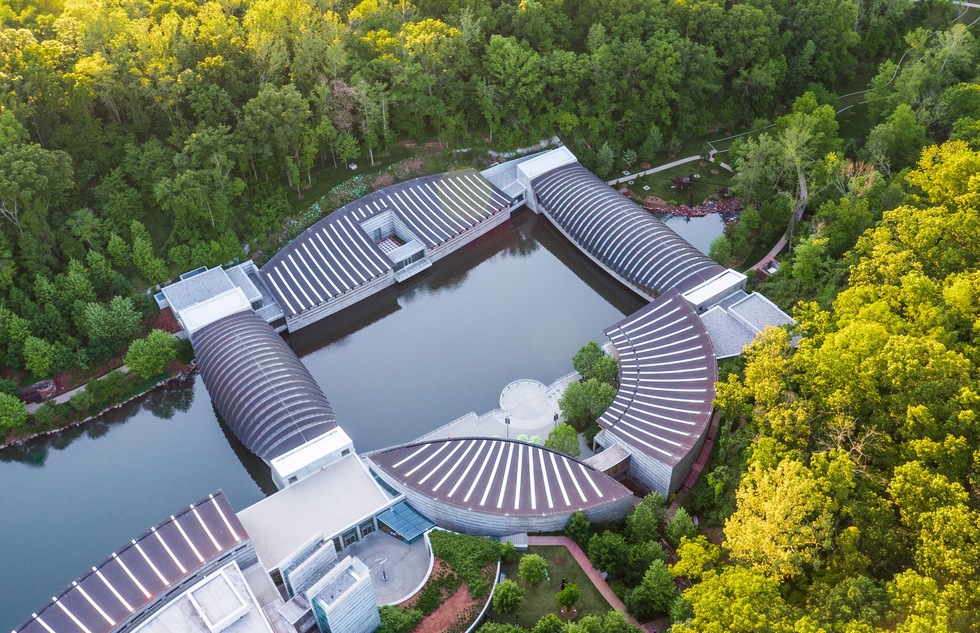
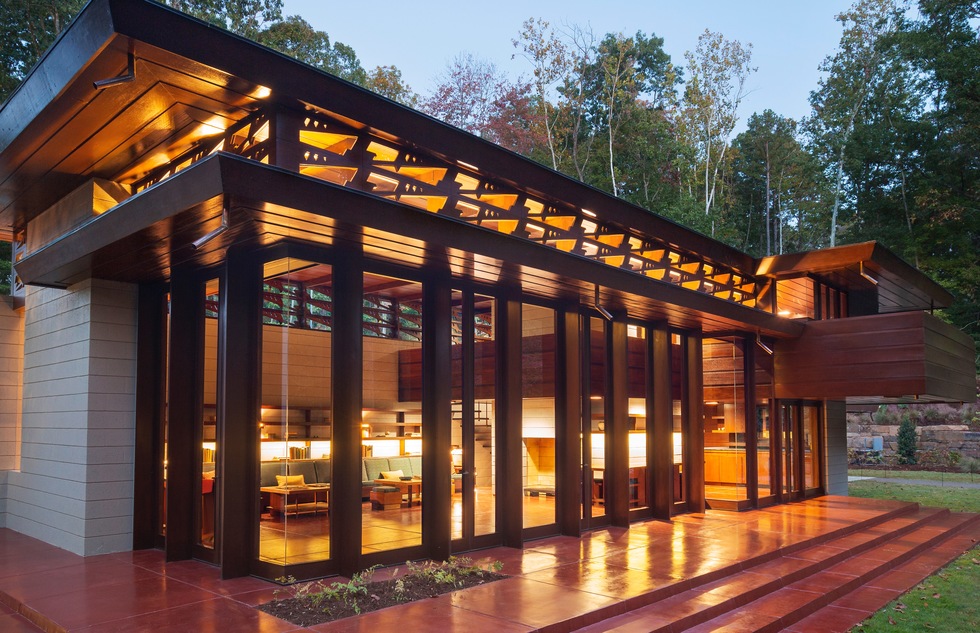
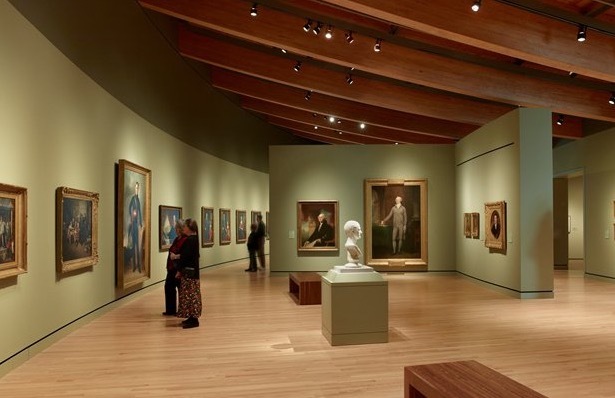
![Asher Brown Durand, "Kindred Spirits" (1849; oil on canvas, 44 x 36 in. [111.8 x 91.4 cm]). Photography by the Metropolitan Museum of Art. Courtesy of Crystal Bridges Museum of American Art, Bentonville, Arkansas Asher Brown Durand, "Kindred Spirits" (1849; oil on canvas, 44 x 36 in. [111.8 x 91.4 cm]). Photography by the Metropolitan Museum of Art. Courtesy of Crystal Bridges Museum of American Art, Bentonville, Arkansas](/system/media_items/attachments/000/857/836/s980/Places.jpg?1481309896)
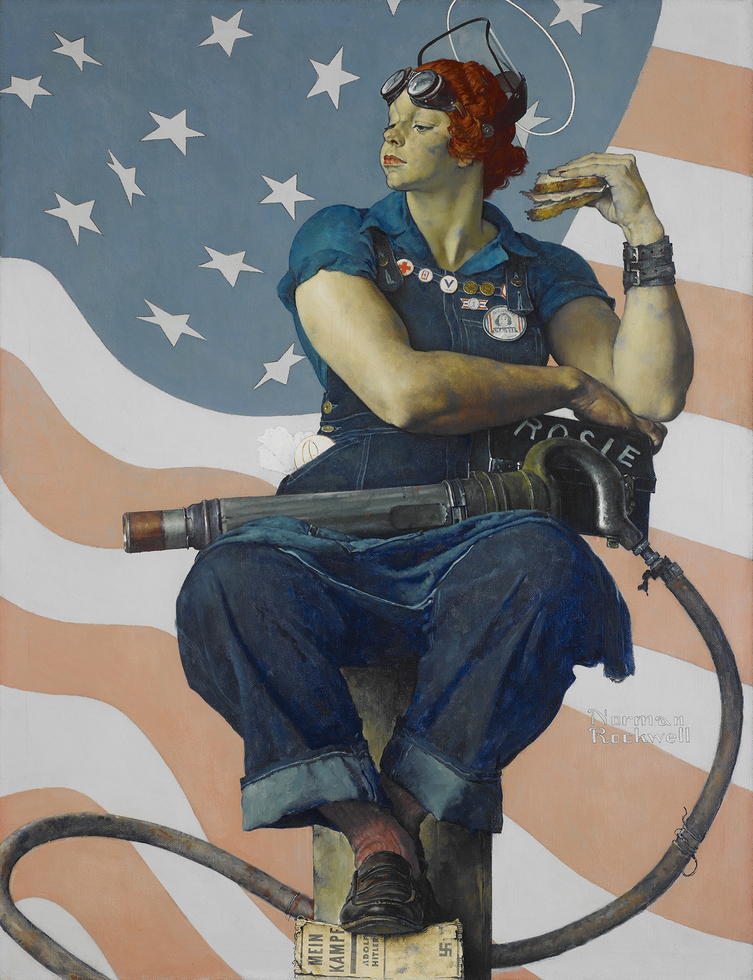
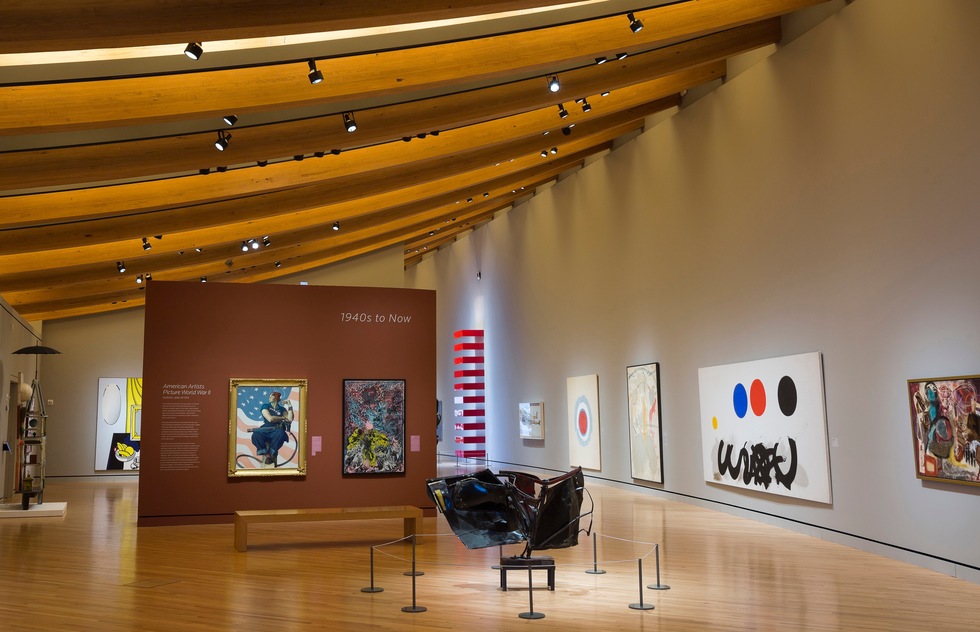
![Felix Gonzalez-Torres, "'Untitled' (L.A.)" (1991; green candies individually wrapped in cellophane; endless supply; overall dimensions vary with installation; ideal weight: 22.7 kg [50 lbs]). Copyright the Felix Gonzalez-Torres Foundation. Felix Gonzalez-Torres, "'Untitled' (L.A.)" (1991; green candies individually wrapped in cellophane; endless supply; overall dimensions vary with installation; ideal weight: 22.7 kg [50 lbs]). Copyright the Felix Gonzalez-Torres Foundation.](/system/media_items/attachments/000/857/839/s980/The_Recent_Past.jpg?1481312134)
